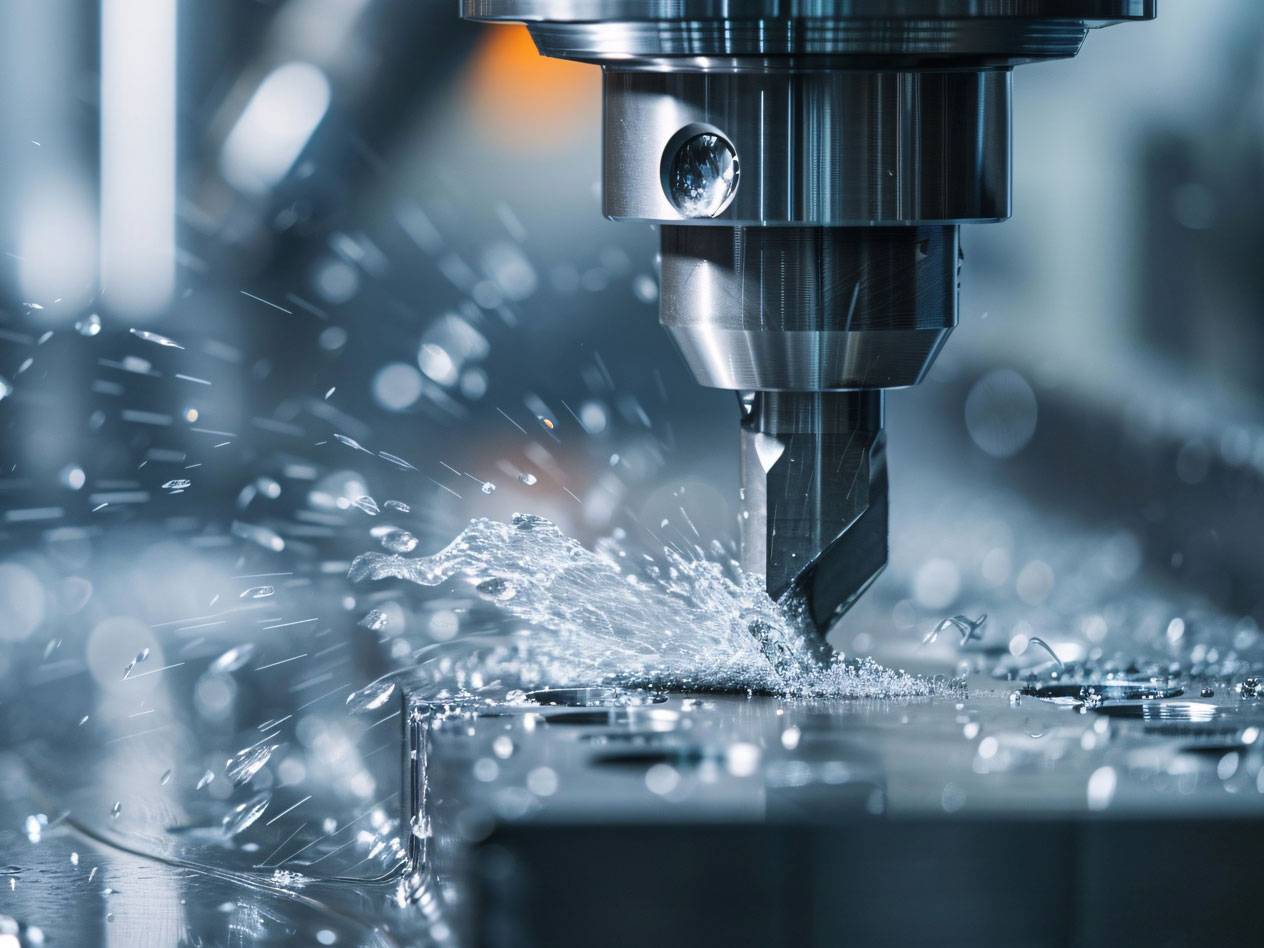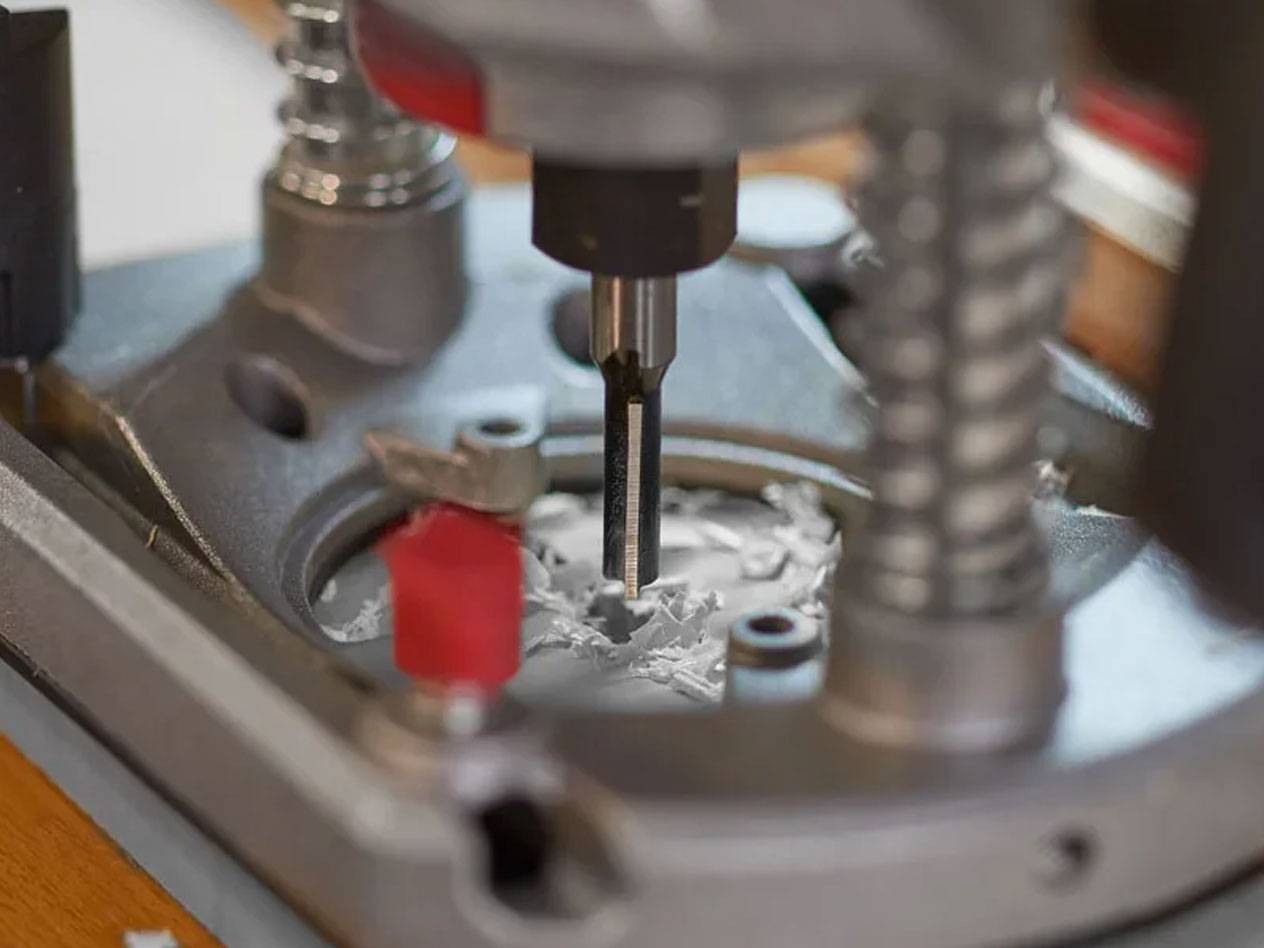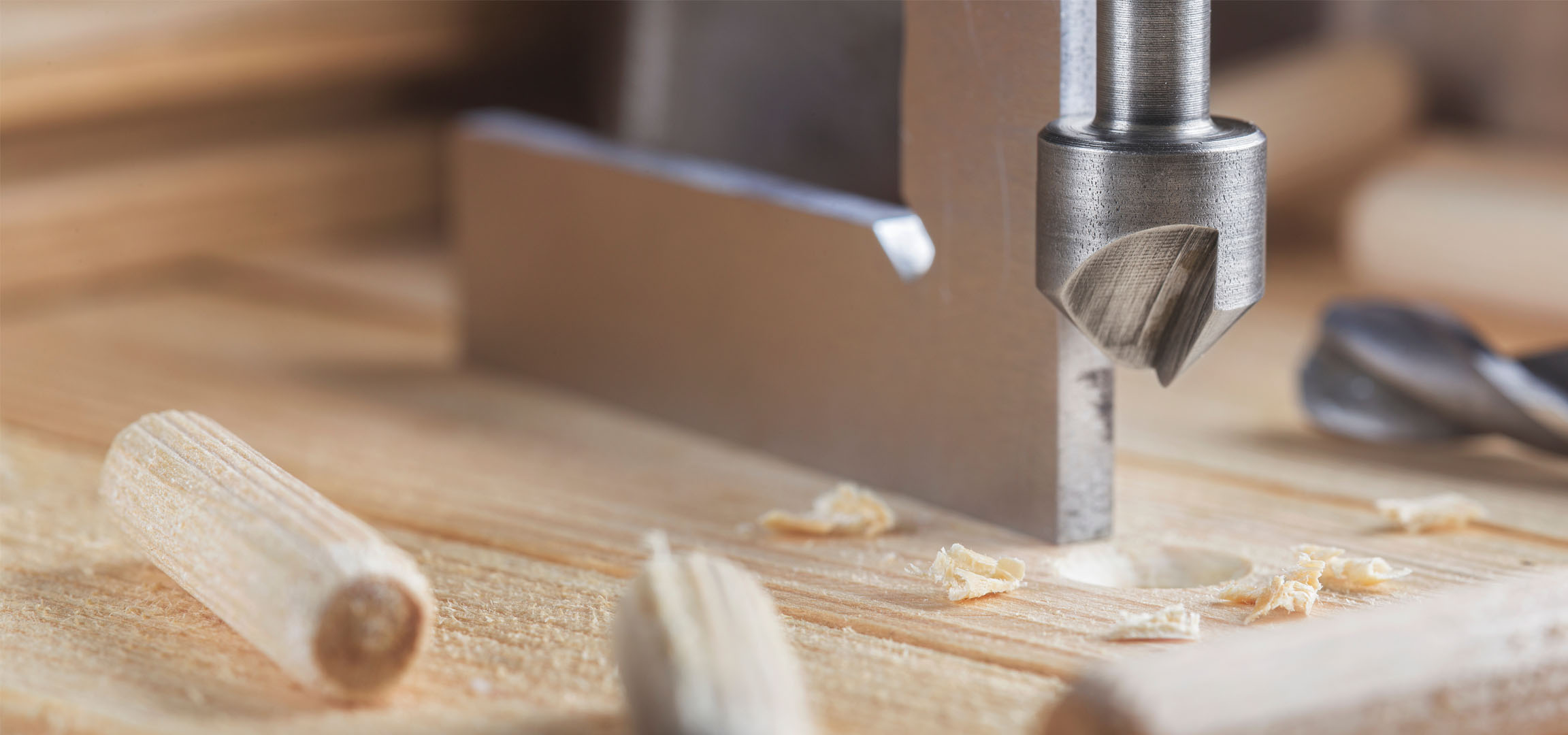Milling
Milling is a versatile working method that can create different profiles. This guide reveals what you should consider when milling and where the benefits lie in a particularly clear and beginner-friendly way.
You will also learn in the following articles how you can manage without a milling machine using a drill and what you need to consider for various milling tasks, such as milling a groove. This ensures even beginners achieve a professional result!
The benefits of milling
Milling means removing material from a workpiece in chips. This creates profiling for various applications. For example, patterns and inscriptions can be milled into the base material. However, the main application is creating material connections: This includes guide rails, T-joints, rebates, holes, and much more. With their help, individual parts can be firmly connected by inserting a second workpiece into the appropriately milled recess. This connection can also be glued or screwed.
Processes & Functions
Milling methods are mainly used for the construction of furniture. The following overview provides an insight into common methods, functions, and device characteristics.
Common Milling Methods
There are various milling methods with their respective specialized devices. The most versatile milling machine is the router. It can be guided very flexibly over the material with different attachments to create the desired recesses.
The device can also be mounted under a plate to create a milling table. This way, the device no longer needs to be guided over the material; instead, the material itself is moved over the milling machine. This is especially advantageous for small workpieces. Uniform grooves can also be worked into flat materials with an electric planer.
Wood is primarily milled. Although other materials such as metals and plastics can also be processed, special devices like a CNC milling machine are usually required. Due to the high acquisition costs and complex operation, this solution is only recommended for a few DIY enthusiasts.
For masonry, there are special wall slot milling machines that can be used to mill guide channels for laying electrical cables or heating pipes. This device is very useful for larger renovation projects and core refurbishments.

That's why milling in the climb milling direction is better
Close-up view of the direction indicator on a router, symbolized by an arrow. When milling, you should always work against the direction of the device. This is usually indicated by an arrow on the device. Although you can also mill in the same direction, the workpiece is much harder to stabilize. In the worst case, the material can even be thrown away. This poses a risk of injury.
The importance of cutting speed
Cutting speed is often cited as a selection criterion for milling machines and is calculated from feed rate, rotational speed, cutter diameter, and the constant Pi. It becomes important only when the shortest processing times and high yield performance, such as in industrial mass production, are required. For this purpose, there are complex tables that optimize productivity and material wear under high load.
For private use, cutting speed is irrelevant and unnecessarily complicated to calculate. The feed rate can be controlled, but it is difficult to quantify. Harder materials, for example, can be milled more slowly because they offer more resistance. An exception is plastic: it should be milled as quickly as possible to prevent the material from melting.

The correct speed for milling
Unlike feed rate, speed is crucial. When milling, unlike sawing, for most woods: go full throttle! Too low speeds result in high friction on the material and do not reliably remove the material. This increases the temperature so much that unsightly heat marks and charred cut edges can occur. Therefore, it is generally advisable to work with higher rather than lower speeds.
For plastics, it is the opposite. Here, you work with the minimum possible speed setting and pay special attention to using a particularly sharp cutter. This should have no more than two cutting edges to ensure enough space for chip removal. This effectively prevents heated chips from sticking together.
Tip
For metal and plastic, a coolant lubricant can also be used. It reduces temperature development and improves chip removal. Additionally, less dust is produced as it is bound in the lubricant.
Conclusion
Milling is a versatile machining method that can create profiles in various shapes. While many materials can be milled, wood is the most popular because:
- Metal requires expensive equipment like a CNC mill, which is rarely a worthwhile investment for home use.
- Materials with low strength tear easily and are therefore unsuitable.
- Plastics require speed control on the milling machine, and the use of coolants may be advisable.
For milling different types of wood, the router offers almost endless application possibilities, facilitating furniture construction and numerous design tasks. When laying cables and pipes during masonry renovation work, a wall chaser is worthwhile.

